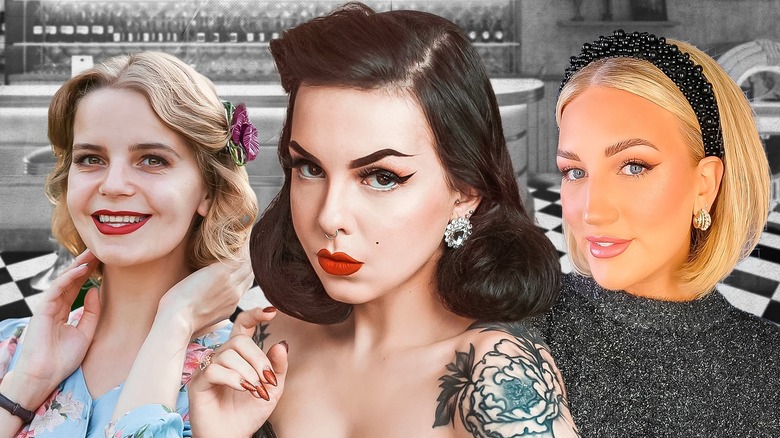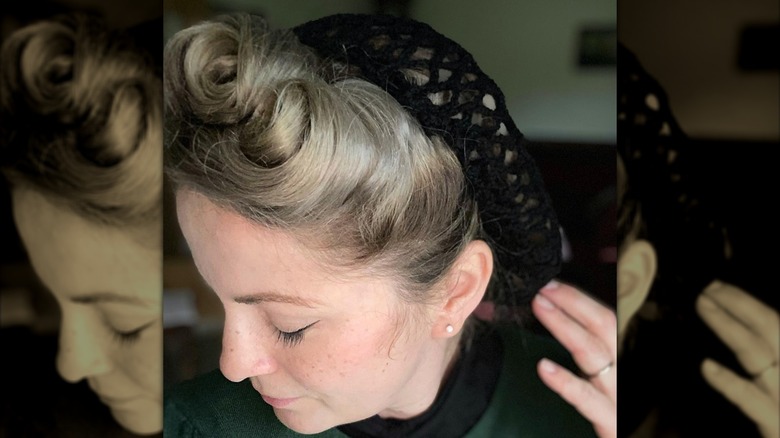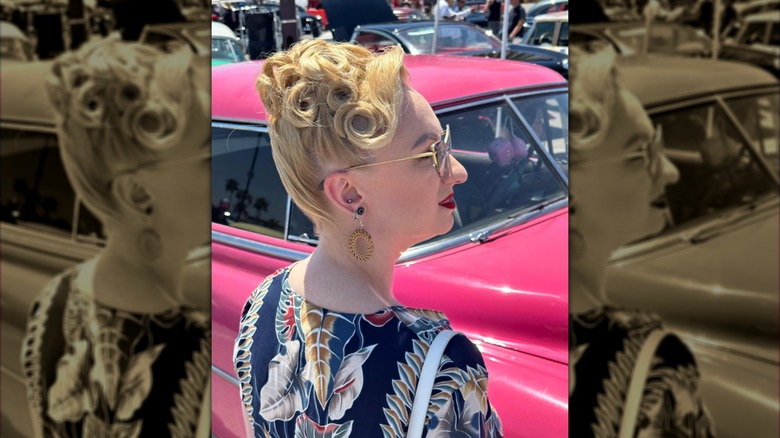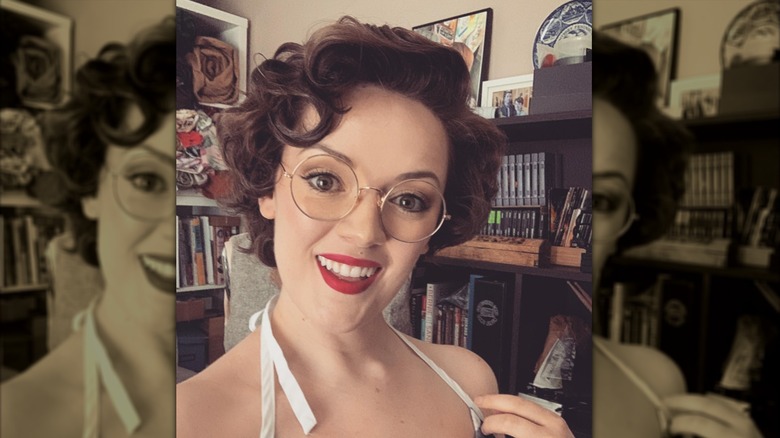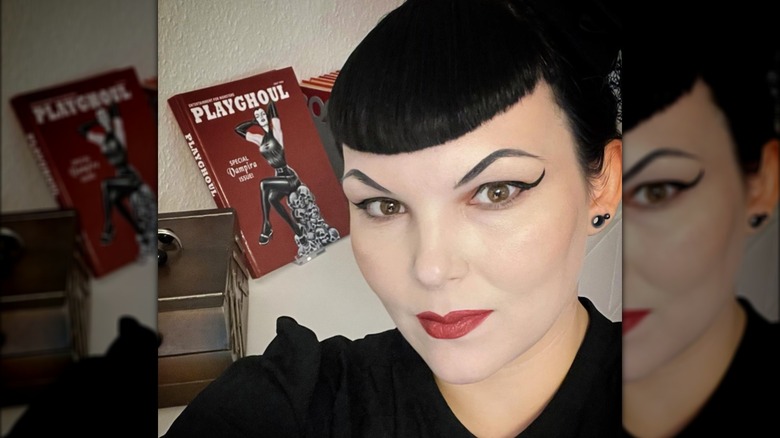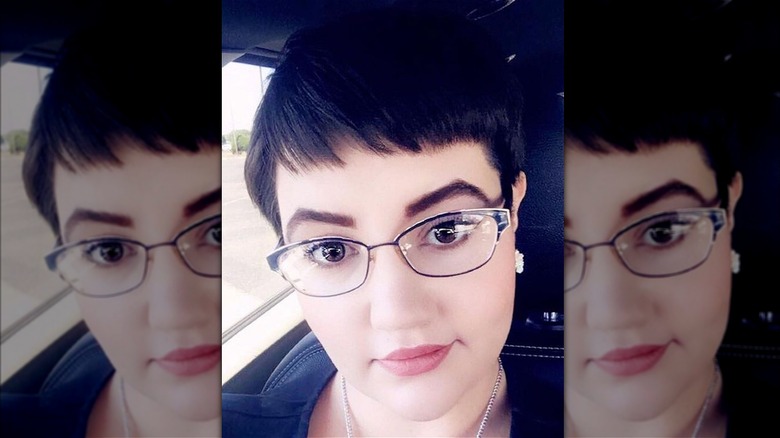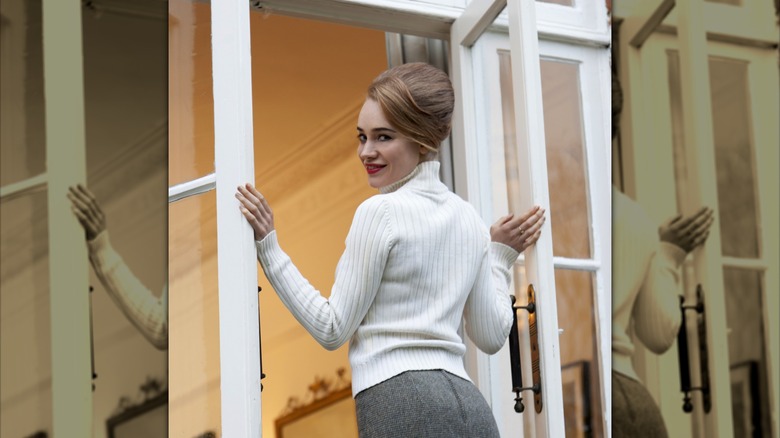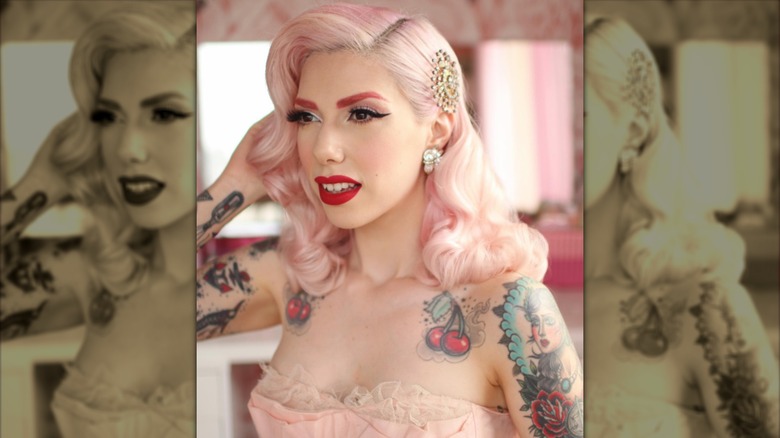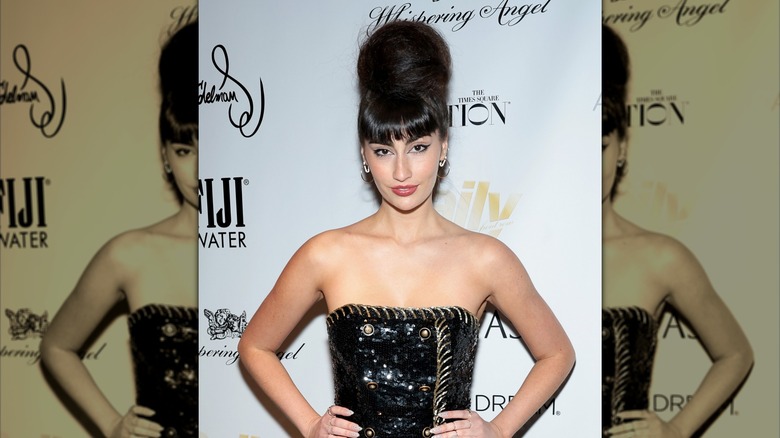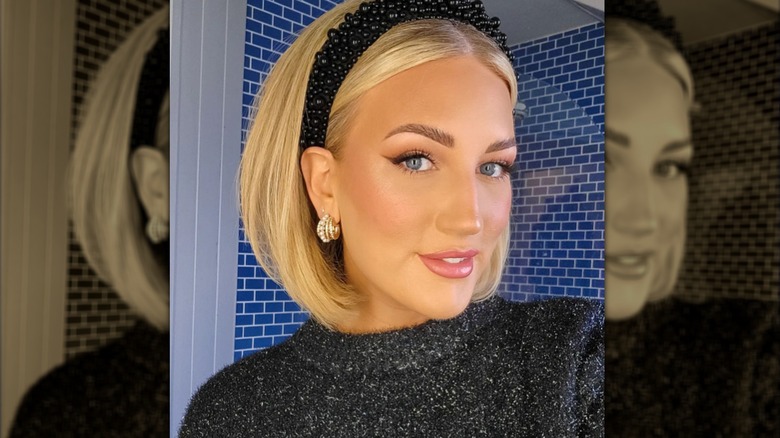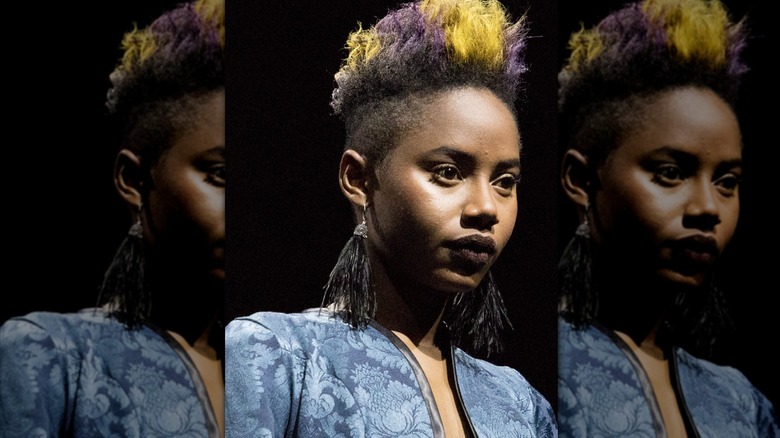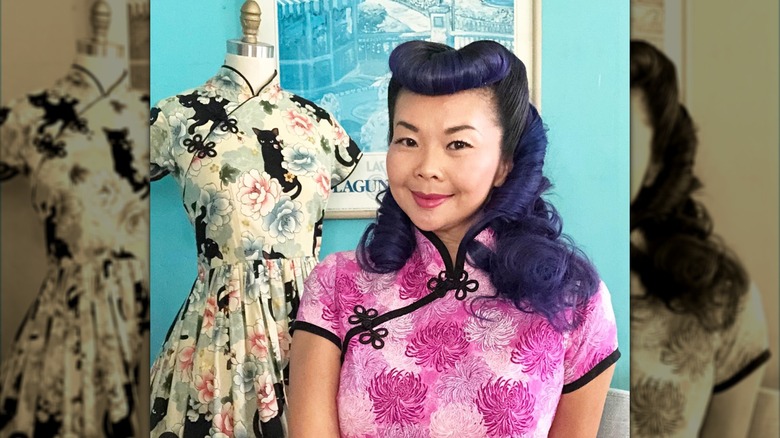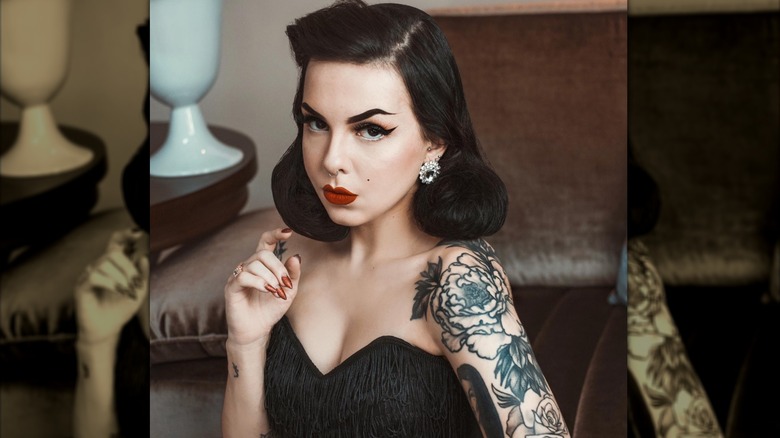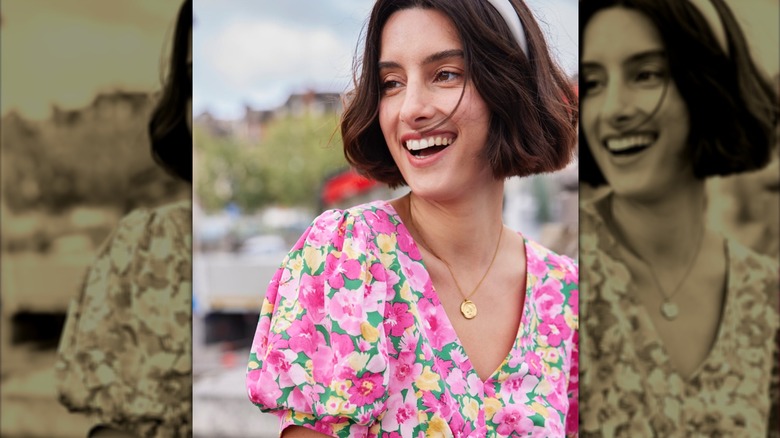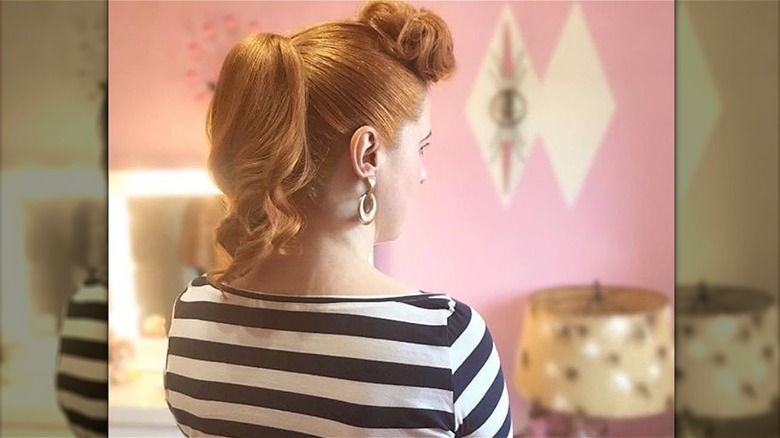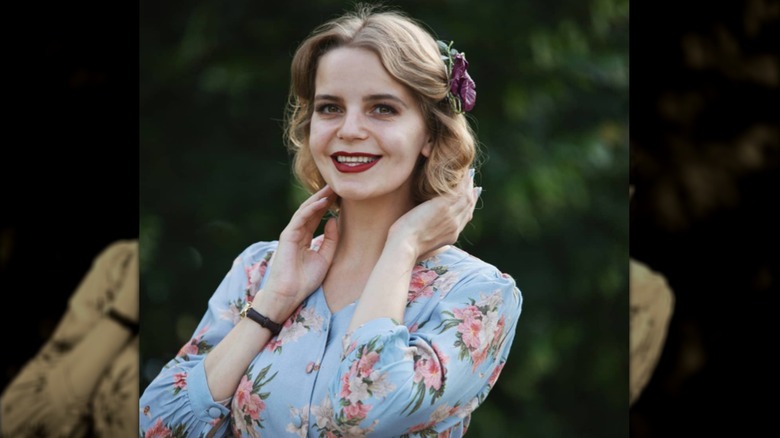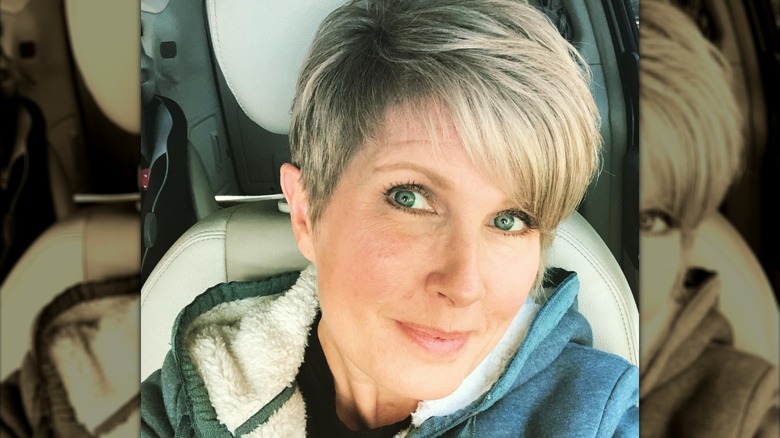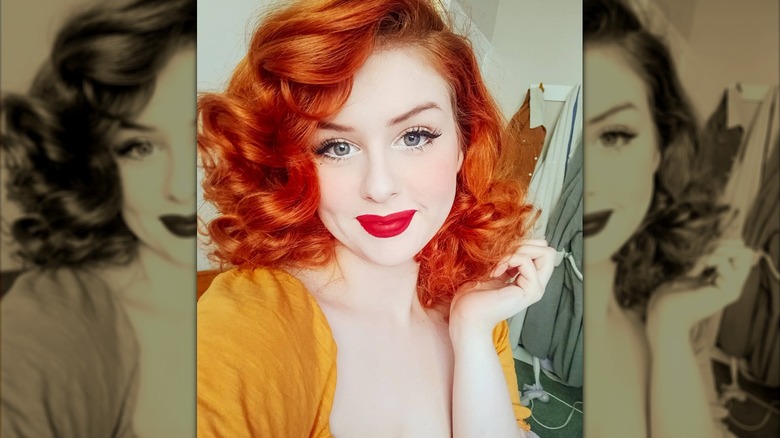15 '50s Inspired Haircuts That Are Staging A Comeback
There's nothing new under the sun, they say, and that statement sure seems to apply to hairstyles. Every half a century or so, hairstyles get renewed and refreshed, and this time it's the 1950s hair. Women's hair in the 1950s was a mishmash of tradition and breaking the boundaries as women were starting to have a voice and feel empowered. The right to vote for women had been passed in 1920 in the United States, per the National Archives, and after 30 years it was high time that women had the right to do what they wanted with their hair, too.
In modern times, as women are again fighting for certain rights, the hairstyles of the '50s just seem fitting to revive. We're seeing shorter cuts such as the Italian cut and the poodle, as well as longer hairstyles like sleek waves and super curls making a comeback. Even the iconic beehive and bouffant hairstyles are having their day. If you're ready to make a statement, take a page from the 1950s and style your hair to speak the volumes that you sometimes can't.
Victory rolls
Victory rolls were made popular during World War II as the United States government made sure to use the term "victory" as often as it could, according to Vintage Hairstyling. Although the open-front roll hairstyle was already in play before the war started, the hairstyle really became popular and was named during the 1940s. This hairstyle is definitely making a comeback as it invokes such a classic retro feel and is elegant, too.
Poodle hair
In the 1950s, a hairstyle called the "poodle cut" became so popular that it instigated a craze — and it helped that Lucille Ball was one of the actresses who sported this cut. The cut was short and curled all around. Its name was literally in reference to the poodle dog since the tight curls reminded people of its hair. Today, women have been spotted wearing this cut as both an actual poodle cut and a faux poodle cut (as in our picture).
Italian cut
After the poodle cut was the height of fashion, the Italian cut came to America. The Italian cut was popularized by Italian movie stars (hence the name) and even Audrey Hepburn joined in on the hairstyle craze. The Italian cut appealed to many women in the 1950s because of its shaggy appearance — which meant you didn't have to spend hours doing your hair — but also because it could be cut to suit different face shapes. Today, it has the same appeal and is still viewed as being a little more feminine than a straight pixie cut.
Bettie bangs
Bettie bangs were inspired by the 1950s pin-up girl Bettie Page, per CNN. Traditionally, they swoop down at the middle and curve up at the sides but modern takes on this style have also featured a soft fringe that stops mid-forehead. We're used to seeing the kind of bangs that come down past the eyebrows and even touch the eyelashes, but these retro bangs expose the forehead a lot more. Trimmed short and neat, they can make a bold statement that gives you a fashion edge.
Gamine pixie
The term "gamine" refers to a woman with a boyish appearance and mannerisms, and the gamine pixie cut was characterized by these same ideas. Celebrities such as Emma Watson and Katie Holmes have both sported gamine pixie cuts in the past (and have looked stunning doing so). Audrey Hepburn was a fan of this style in the 1950s and wore it perfectly with short bangs and layers that were pretty minimal.
The bouffant
Bouffant comes from the French "bouffante" which basically just means "puffed out," per The Edvocate. It was worn both as an all-up hairstyle or just by teasing up the top of the head and curling the ends. It was usually a tame hairstyle but it could get pretty voluminous if the hair was backcombed enough to be very tall. The bouffant was already in a revival in the 1950s as a new take on an 18th-century hairstyle, so its been modernized again with accessories like braids and other hair pieces.
Sleek waves
Unlike the messy waves of today, the 1950s waves were soft and shoulder-length, often curling in at the bottom. The hairstyle was usually parted on the side with one side being more voluminous than the other. Celebrities such as Reese Witherspoon and Jessica Alba love wearing their hair in this style, even if it's usually a bit more modern with the ends left loose instead of curled under. You can easily achieve this hairstyle by putting your hair in curlers overnight and then brushing it out in the morning — get it nice and sleek by using pomade or hair gel.
The beehive
Amy Winehouse's signature hair has now made a modern comeback, as it was popular during the 1950s. It was no surprise that the beehive hair was popular, being quite similar to the bouffant hairstyle — and the invention of hairspray in the 1940s is what made both of them possible. The beehive was even harder to achieve than the bouffant as it required more hairspray and was taller. Today, this hairstyle is usually only attempted for red-carpet events and special occasions.
Brushed-under bob
The bob never really went away after the '50s, and we've seen all kinds of takes on the style in the years since. The last few years have seen women resurrect the curled-under bob specifically, as it's easy to upkeep and easier still to style. You don't have to do much other than straightening your hair and flipping it towards your face at the ends. The 1950s curled-under bobs even had some flair with softly brushed-out waves, but a modern take on this bob will be just as beautiful.
The pompadour
This 1950s style was worn equally by men and women and got its name from Madame de Pompadour, a mistress of Louis XV, according to FashionBeans. It was a style that was worn in many different ways (especially since both men and women had the cut) but it was generally characterized by the big pile of hair on top of the head.
Curled-under bangs
In our opinion, nothing exemplifies a retro look like curled-under bangs. These bangs were also called "bumper bangs" and were popularized by stars like Rita Hayworth. To get this style, separate either your bangs or pull a part of your hair from the top of your head to the front. Then you curl the bangs by wrapping them around your fingers and pinning them under and on the sides.
The pageboy
The pageboy hairstyle was one of the most prominent of the 1950s, probably because it was easier to do and set than some of the other styles. It required only the bottom of your hair to be curled while the top and sides were pretty neatly straight. This gave women that shorter hair look they were going for without being too boyish. It was the best of both worlds for women in the 1950s, and it has made its resurgence today as women are going back to that old Hollywood look.
French bob
Another bob of the '50s was the French bob. This hairstyle is very laid-back and easy to style as it does not require any smoothing or voluminous waves. The cut is straight across at the bottom and hits as high as mid-cheek or down to above the chin. The only thing you'll have to worry about with this style is how many of your friends will copy you.
Wavy ponytail
For women who wore longer hairstyles in the 1950s, sleek waves were all the rage but a sleek ponytail did the job in a pinch, too. Putting your hair up into a ponytail still showed off some curls and length but was more appropriate for times when you were working. Today, this style is still worn all the time, even on the red carpet — most notably, Kate Beckinsale has worn the style multiple times.
Faux bob
The faux bob was a lifesaver for women in the 1950s who didn't want to cut their hair short but still wanted to try the style out. The faux bob is achieved by curling and then gathering your hair into a loose ponytail, and finally pinning the bottom half underneath the top half to achieve a look that's somewhat similar to a curled-under bob. It would usually end up being thicker at the bottom where it curled up and women could choose to either straighten or softly wave the rest of their hair to finish off the look.
Pixie cut
Ah, the iconic pixie cut — this hairstyle's star seems like it will never fade as it just keeps staying through the decades. Longer in the front and shorter in the sides and back, this hairstyle is a breeze to style and is perfect for powerful women who are always on the go (or even just for busy moms who don't have time to curl their hair every day!). It does take some dedication as you have to commit to regular visits to your salon for trims to keep its shape, but it saves you time in the long run if you're a no-fuss kind of gal.
Super curls
Super tight, super bouncy, super voluminous curls were one of the most feminine hairstyles of the 1950s. With rollers being all the rage, some women chose to give their hair this kind of treatment every day. Your hair doesn't have to be a particular length to enjoy this hairstyle either — hair of all lengths was tightly curled to give women a full head that can only be described as a glorious crown. The 1950s saw Marylin Monroe give us all a run for our money with her iconic curls.
